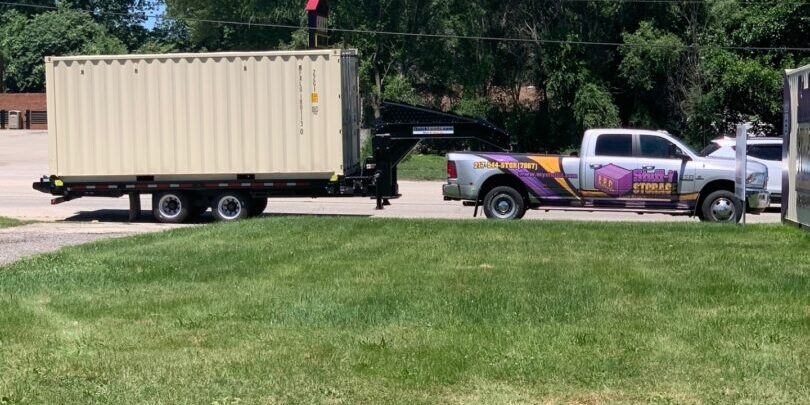
15 Brilliant Ways People Are Using Shipping Containers Today!
Discover creative, functional, and genius ways to use shipping containers Introduction If you think shipping containers are just for transporting goods across oceans, you’re missing out! These industrial giants are having a huge moment in design and remodeling. With their durable, affordable, and versatile structure, homeowners across the country are transforming shipping containers into creative shipping container ideas for homes and businesses that are budget-friendly and full of character. I’ll admit—when I first saw a shipping container turned into a guest house, I thought, “Really? A metal box?” But once you see how they can be customized and styled, it’s easy to understand the appeal. Today, they’re being used for everything from home offices to backyard pools, and the possibilities are endless. Whether you’re looking to add more space to your property, build something unique, or even generate some extra income, these 15 brilliant creative shipping container ideas for homes and businesses are sure to inspire your next project! Check out our options here. 1. Backyard Office Container Space With remote work becoming a permanent fixture in many people’s lives, shipping containers make for perfect backyard offices. Imagine walking just steps to your peaceful, private workspace—no commute required. Why It Works: Containers are affordable, quick to install, and easy to insulate. Design Tip: Add large windows for natural light, and decorate it like a real office with plants, shelves, and a comfy chair. A friend of mine set up a container office in his backyard last year. He painted it charcoal gray, added wood accents, and threw in a standing desk. Now, his Zoom calls look like they’re happening in a luxury studio! 2. Guest Suites for Friends and Family Turn a shipping container into a cozy guest suite that provides comfort without encroaching on your main house. It’s a win-win: your guests get privacy, and you get to keep your living room clutter-free. Why It Works: A 20-foot or 40-foot container is plenty of space for a bedroom, small bathroom, and kitchenette. Design Tip: Use stylish finishes like shiplap walls or floating shelves to make it feel inviting. Pro Tip: You can even list it on Airbnb when it’s not in use for extra income! 3. Private Home Gym Skip the pricey gym memberships and build your own fitness haven. Shipping containers provide enough room for weights, cardio machines, and even yoga spaces. Why It Works: You can customize the space with proper flooring, mirrors, and ventilation. Design Tip: Install a roll-up door for easy access and airflow on nice days. A client of mine transformed their old container into a home gym with just a few rubber mats, a wall-mounted TV, and a dumbbell rack. Now, their fitness routine is better than ever, and there’s no excuse to skip leg day. 4. Hobby Room or Art Studio If you love painting, crafting, or woodworking, a shipping container can be your creative sanctuary. Why It Works: Keep your mess contained and your supplies organized. Design Tip: Add shelves and pegboards for tools, and plenty of windows for natural light. One of my neighbors created a container pottery studio in their backyard. It’s rustic, charming, and totally functional—plus, it freed up their garage! 5. Man Caves or She Sheds Looking for the ultimate relaxation or entertainment space? A shipping container is the perfect blank canvas for a man cave, she shed, or entertainment den. Why It Works: Containers can be customized to fit your dream retreat. Design Tip: Use comfy furniture, personal decor (think neon signs or bookshelves), and soundproofing for the perfect escape. A buddy of mine has a container man cave with a big-screen TV, a bar, and vintage arcade games. It’s where everyone wants to be on game night! 6. Stylish Pool House Shipping containers make for chic and functional pool houses. Use them to store pool gear, house changing rooms, or even add a shaded seating area. Why It Works: Containers are weatherproof and durable. Design Tip: Add sliding glass doors or a deck to tie it into your outdoor space seamlessly. 7. Greenhouses for Your Garden Love gardening? Turn a shipping container into a climate-controlled greenhouse to grow flowers, vegetables, or exotic plants. Why It Works: Containers are sturdy and easy to retrofit with skylights and ventilation. Design Tip: Use polycarbonate roofing or install glass panels for maximum light. 8. Outdoor Kitchen or Dining Area If you love hosting barbecues or outdoor dinner parties, why not turn a container into an outdoor kitchen? Why It Works: Containers are the perfect base for custom outdoor spaces. Design Tip: Include built-in counters, a grill, and string lights for evening ambiance. 9. Shipping Container Pools Believe it or not, shipping containers can be transformed into fully functional swimming pools. They’re affordable, unique, and much quicker to install than traditional pools. Why It Works: The structure is already waterproof and sturdy. Design Tip: Add a glass viewing wall for a modern, luxurious look. 10. Rental Units or Airbnb Spaces If you want to earn passive income, a shipping container rental unit could be your golden ticket. Guests love the quirky, eco-friendly appeal. Why It Works: Containers can be designed as cozy, functional tiny homes. Design Tip: Add hotel-like amenities such as a comfy bed, kitchenette, and modern bathroom. 11. Affordable Tiny Homes For those looking to downsize or build a unique home, shipping containers offer the perfect blank slate for tiny living. Why It Works: They’re cost-effective, eco-friendly, and customizable. Design Tip: Use open floor plans, skylights, and minimalist decor to make the space feel bigger. 12. Storm Shelters or Safe Rooms Shipping containers are strong and durable, making them an excellent base for storm shelters in areas prone to severe weather. Why It Works: They can withstand high winds and heavy impacts. Design Tip: Reinforce the walls and install ventilation systems for comfort and safety. 13. Custom Workshop for DIY Projects If you run a home-based business or love DIY, a container workshop can help you





